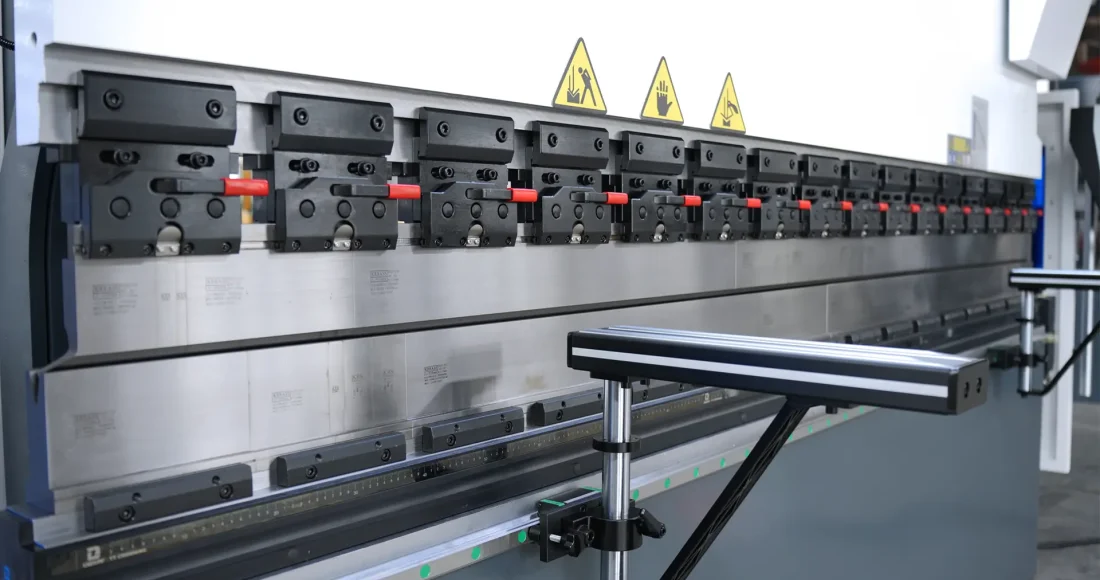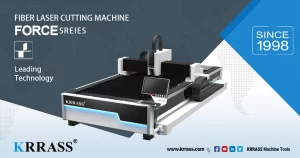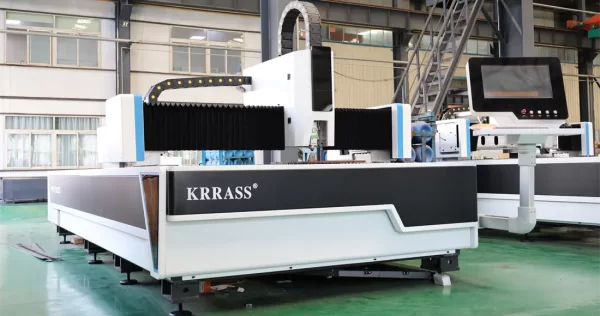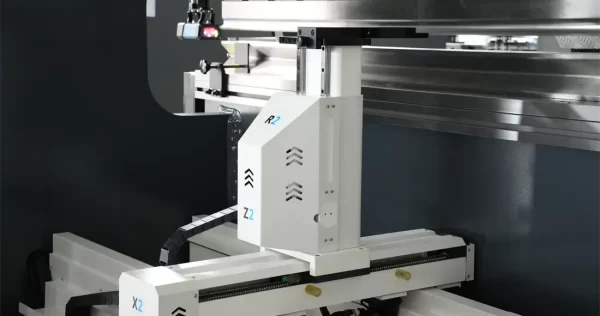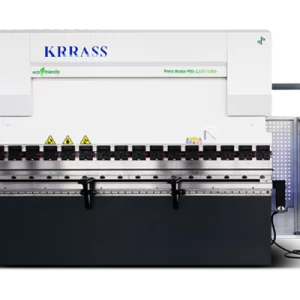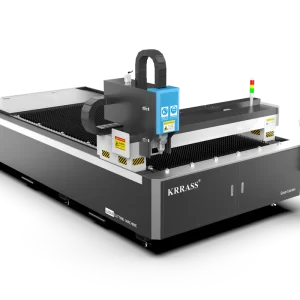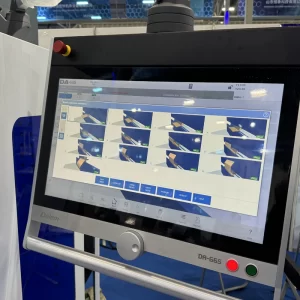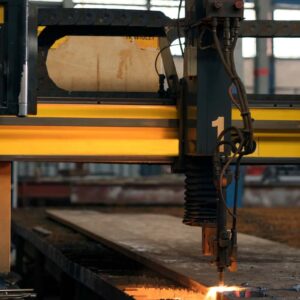In this detailed exploration, we’ll dive into the intricacies of the axes on a press brake, understand the role of the back gauge, and unravel the complexities of multi-axis bending. For professionals looking to refine their stainless steel bending skills or beginners eager to learn, this article serves as an essential resource. We cover everything from choosing the right press brake to solving common problems in the bending process, ensuring precision and efficiency in your metal fabrication projects.
- Importance of Bending in Metalworking
- What Are the Axes on the Press Brake?
- What Is Back Gauge on the Press Brake?
- Relationship Between Back Gauge and Axis
- Main Groups of Controlled Axis
- Axes on the Back Gauge:
- Other Axes on the Press Brake
- How to Choose Multi-Axis Press Brake
- Problem-Solving in Bending Process
Importance of Bending in Metalworking
Bending, a crucial process in metalworking, plays an essential role in shaping the world of fabrication and construction. This technique is pivotal in transforming stainless steel sheets and other metals into usable forms and structures. Let’s delve into why bending is so significant in metalworking and how it impacts the industry.
The Fundamental Role of Bending
Bending is the process of deforming metal into a specific angle or shape, a fundamental step in creating a vast range of metal products. From construction beams to automotive parts, bending is integral in producing components with the necessary shape and strength for their intended applications.
Precision and Versatility in Metal Fabrication
The ability to bend metal precisely allows for an incredible level of versatility in fabrication. Modern technologies, especially the press brake, have revolutionized bending by enabling complex shapes and designs with high accuracy and efficiency.
Economic and Structural Advantages
Bending is not only about shaping metal; it’s also about enhancing the material’s structural integrity and efficiency. Properly bent metal can bear loads more effectively, an essential aspect in construction and manufacturing industries. This process also allows for economical use of materials, reducing waste and lowering costs.
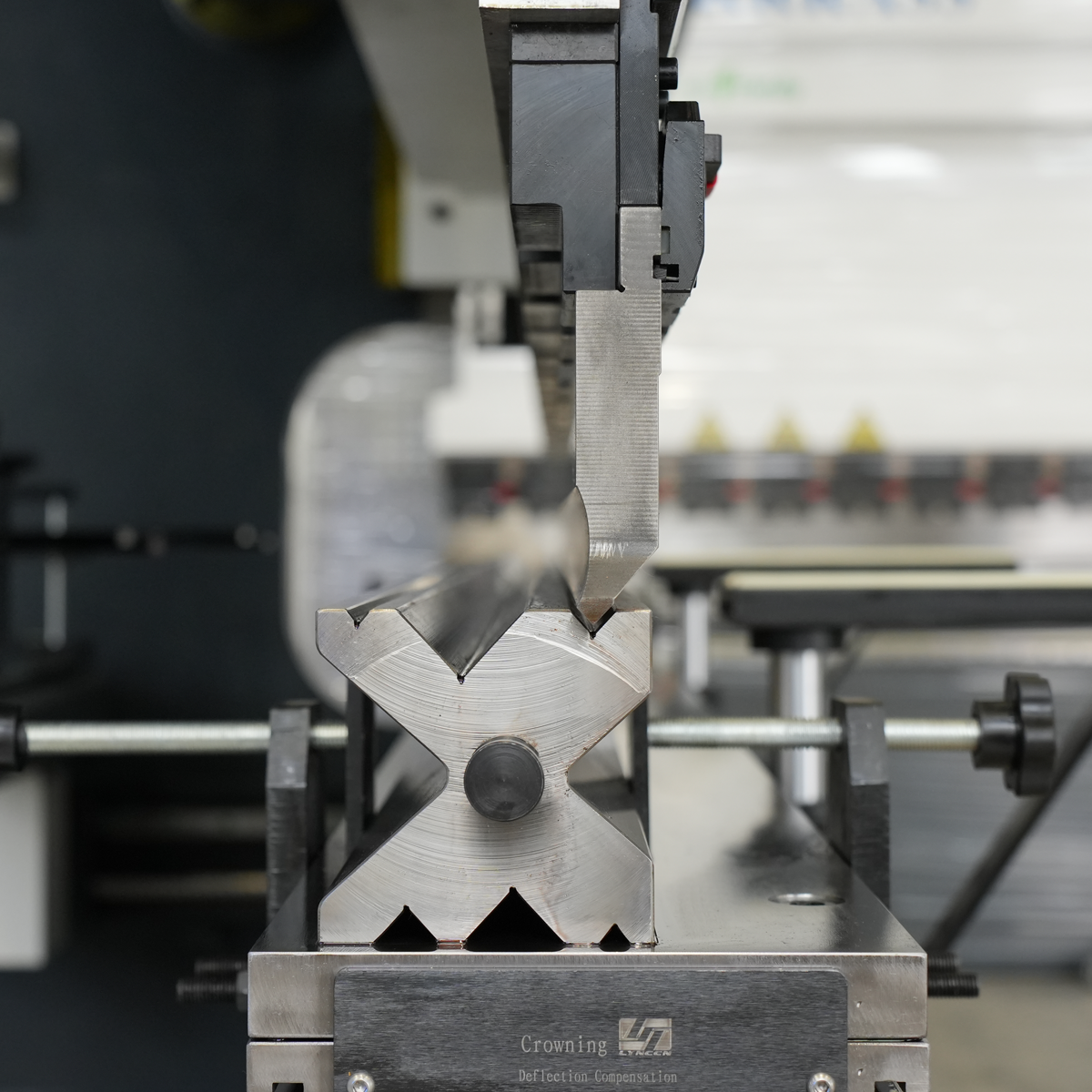
What Are the Axes on the Press Brake?
When it comes to bending stainless steel sheets, the axes on a press brake are fundamental components that dictate the precision and quality of the bend. A press brake, a critical machine in metal fabrication, utilizes various axes to achieve the desired bend. Let’s delve into the details of these axes and their significance in stainless steel bending.
Understanding the Primary Axes: X, Y, and Z
The press brake operates primarily on three axes: the X, Y, and Z axes. The Y-axis controls the vertical movement of the press brake’s ram, which is crucial in determining the bend’s angle and depth on the stainless steel sheet. This axis is the heart of the bending process, dictating the precision of the bend.
The X-axis manages the horizontal movement of the sheet before bending, positioning it accurately for the bend. This axis is essential for consistency in repetitive bending tasks, ensuring each bend is uniform.
The Z-axis is responsible for the lateral movement of the back gauge, aligning the stainless steel sheet correctly for the bend. Precision along the Z-axis is vital for complex bending tasks requiring high accuracy.
Advanced Axes for Complex Bending
Modern press brakes may include additional axes, such as R, A, B, and C, enhancing the machine’s versatility. The R-axis adjusts the vertical position of the back gauge, allowing for more intricate bending processes, essential for complex stainless steel projects.
The A, B, and C axes provide additional movements and adjustments, enabling the machine to perform more complex bends and shapes. These axes are particularly useful in specialized stainless steel bending operations, where precision and versatility are paramount.
A thorough understanding of these axes is critical for anyone involved in stainless steel sheet bending. Mastery of these axes allows for the creation of precise, consistent bends, essential for both simple and complex stainless steel fabrications.
What Is Back Gauge on the Press Brake?
In the realm of bending stainless steel sheets, the back gauge of a press brake is a vital component that greatly influences the accuracy and consistency of bends. Understanding the back gauge’s functionality is crucial for anyone engaged in stainless steel bending. Let’s delve into what a back gauge is and its importance in the press brake operation.
The Role of the Back Gauge in Press Brake Operation
The back gauge is an adjustable stop that positions and supports the stainless steel sheet during the bending process. Its primary function is to ensure that the bend is made at the correct location on the sheet. This is particularly critical for achieving precise and repeatable bends in stainless steel fabrication.
The back gauge can move along multiple axes, most commonly the X and R axes. The X-axis movement allows the back gauge to position the sheet longitudinally, ensuring the bend is at the correct distance from the sheet’s edge. Meanwhile, the R-axis adjusts the height of the back gauge, accommodating different bend angles and sheet thicknesses.
Advanced Features of Modern Back Gauges
Advanced press brakes often feature back gauges with additional axes, such as the Z-axis, which provides lateral movement. This enables more complex positioning for intricate bending operations, essential in sophisticated stainless steel projects.
Some back gauges also include tilting and rotating functions, allowing for even more precise control over the bending process. These features are invaluable in creating complex shapes and profiles in stainless steel sheets, where precision is paramount.
The precision and capabilities of the back gauge significantly impact the efficiency and quality of the bending process. A well-calibrated back gauge ensures that each bend is consistent, accurate, and meets the stringent standards required in stainless steel fabrication.
Understanding the back gauge’s role and capabilities is essential for anyone looking to excel in stainless steel sheet bending. This knowledge is a cornerstone in achieving the high-quality, precise bends necessary for advanced metal fabrication tasks.
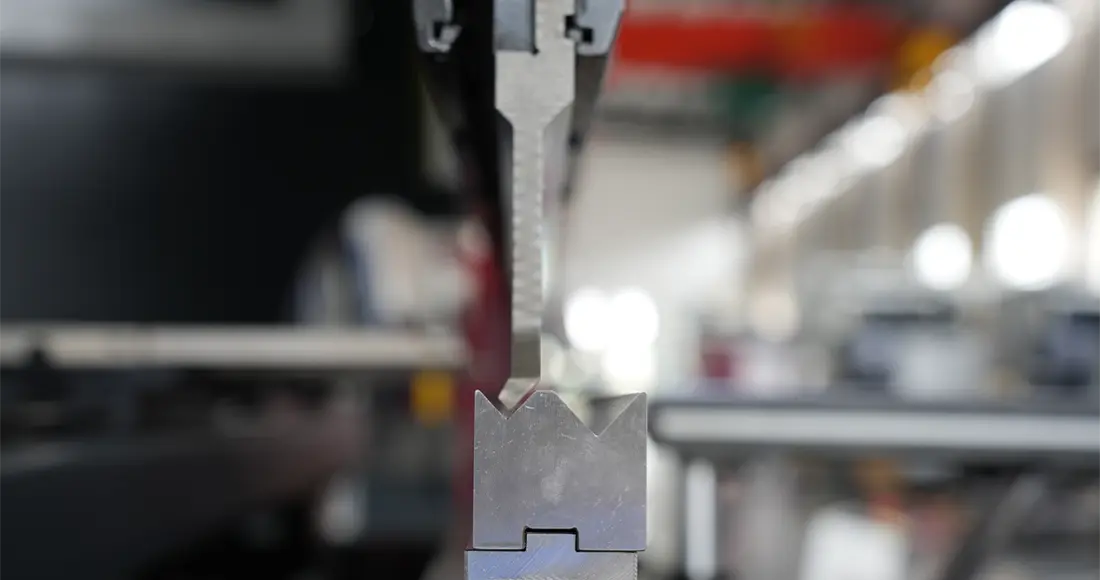
Relationship Between Back Gauge and Axis
Understanding the relationship between the back gauge and the axes on a press brake is key to mastering the art of bending stainless steel sheets. This relationship plays a pivotal role in achieving precision and consistency in metal fabrication. Let’s explore how these components work together to create the perfect bend in stainless steel.
The Interplay of Back Gauge and Axes in Bending
The back gauge of a press brake is intricately linked to various axes (X, Y, Z, R, etc.) of the machine. Each axis has a specific function that, when combined with the back gauge’s positioning, results in precise bending of stainless steel sheets.
The X-axis, for instance, controls the forward and backward movement of the back gauge, dictating the distance at which the bend will be made from the edge of the stainless steel sheet. This axis is crucial for ensuring that each bend is consistent, especially when working on multiple pieces.
The R-axis, on the other hand, adjusts the height of the back gauge. This is particularly important for accommodating different thicknesses of stainless steel sheets and varying bend angles. The precise control over the R-axis allows for complex bending sequences without the need for manual repositioning.
Enhanced Capabilities with Additional Axes
In more advanced press brakes, additional axes such as the Z-axis offer lateral movement of the back gauge. This feature is invaluable for complex projects where the bends need to be positioned at specific points across the width of the stainless steel sheet.
The integration of these axes with the back gauge transforms the press brake into a highly versatile and precise tool for stainless steel bending. It allows fabricators to execute complex bending operations with high accuracy and repeatability.
In conclusion, the synergy between the back gauge and the various axes is what makes the press brake such an effective tool for stainless steel bending. This relationship is fundamental in achieving the precision required in modern metal fabrication.
Main Groups of Controlled Axis: The Y Axis
In the domain of bending stainless steel sheets with a press brake, the Y axis stands out as a critical component. This axis primarily controls the bending process, making its understanding and control essential for achieving precision in metal fabrication. Let’s delve into the significance of the Y axis and its role in the main groups of controlled axes.
The Crucial Role of the Y Axis in Bending Operations
The Y axis is responsible for the vertical movement of the press brake’s ram or upper beam. This movement is what actually creates the bend in the stainless steel sheet. The accuracy of the Y axis’s movement is paramount in determining both the angle and depth of the bend, which are critical factors in the quality of the final product.
In most press brakes, the Y axis is controlled with high precision, allowing for minute adjustments. This is vital in tasks that require a high degree of accuracy, such as when working with thin stainless steel sheets or complex bending patterns.
Synchronization in Dual Y Axis Systems
Advanced press brakes often feature a dual Y axis system. This setup involves two independently controlled Y axes working in tandem to ensure even pressure distribution across the length of the bend. This is especially important for long or wide stainless steel sheets, where uneven bending pressure can lead to inaccuracies or distortions in the final product.
The synchronization of the dual Y axis is achieved through sophisticated control systems, ensuring that both sides of the press brake operate in perfect harmony. This results in precise bends, even in the most challenging projects.
In summary, the Y axis, whether in a single or dual configuration, is a key player in the controlled axes of a press brake. Its precise management is essential for achieving the high standards required in stainless steel bending operations.
Axes on the Back Gauge: X Axis, R Axis, and Z Axis
In the precise craft of bending stainless steel sheets with a press brake, the axes on the back gauge play a critical role. These axes, specifically the X, R, and Z axes, are central to positioning the metal sheet accurately for the bend. Let’s explore each of these axes and their unique contributions to the bending process.
The X Axis: Longitudinal Positioning
The X axis on the back gauge is responsible for the forward and backward movement of the gauge, controlling the longitudinal positioning of the stainless steel sheet. This axis determines how far into the press brake the sheet is placed before the bend is made. Precision along the X axis is crucial for consistent bending, particularly when working on multiple pieces or when precise measurements are essential.
The R Axis: Vertical Adjustment
The R axis adjusts the height of the back gauge, allowing it to accommodate different material thicknesses and bend angles. This flexibility is particularly important for complex bending operations or when transitioning between different stainless steel sheet specifications. Precise control of the R axis ensures that each bend is made at the correct height, contributing to the accuracy and quality of the finished product.
The Z Axis: Lateral Movement
The Z axis allows for lateral movement of the back gauge, positioning the sheet side-to-side. This axis is especially important for complex projects where bends need to be precisely located across the width of the material. The Z axis enhances the machine’s capability to produce complex bends, ensuring precision across the entire surface of the stainless steel sheet.
In summary, the X, R, and Z axes on the back gauge are integral to the press brake’s ability to produce precise and consistent bends in stainless steel sheets. Their combined functionalities ensure that the metal is positioned accurately for each bend, leading to high-quality outcomes in metal fabrication.
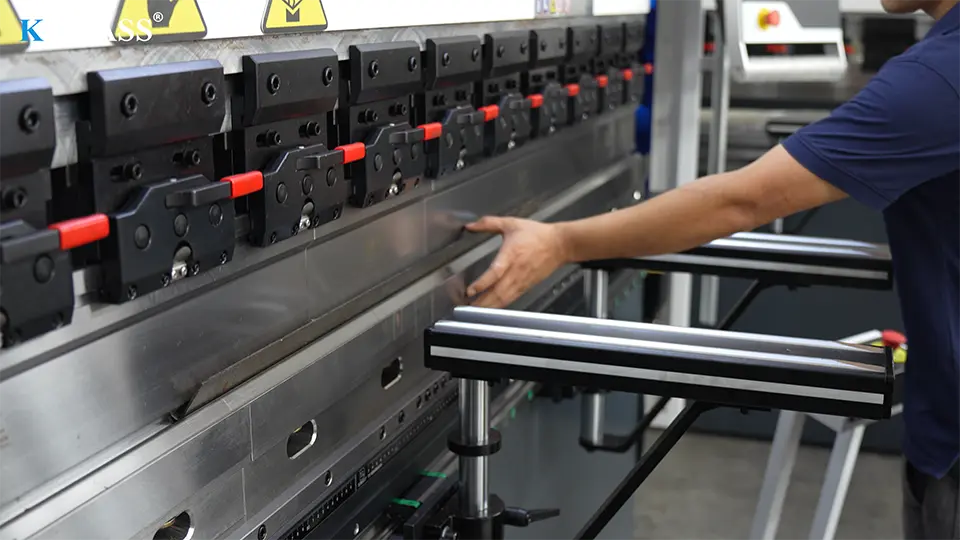
Other Axes on the Press Brake
While the primary axes like X, Y, Z, and R are crucial in the operation of a press brake for bending stainless steel sheets, there are other axes that play significant roles in advanced bending techniques. These additional axes enhance the capabilities of the press brake, allowing for more complex and precise bending operations. Let’s explore these other axes and their contributions to the press brake’s functionality.
The A Axis: Angular Control
The A axis is often used in more sophisticated press brakes. It provides angular control for the bending process, enabling the press brake to achieve precise angles in the bend. This is particularly useful in complex fabrication projects where angular precision is paramount.
The B and C Axes: Tilting and Rotation
The B and C axes are less common but equally important in specialized bending operations. These axes allow for tilting and rotation of the back gauge or other components of the press brake. The inclusion of these axes opens up possibilities for creating non-standard bends and shapes in stainless steel sheets, which are often required in custom metal fabrication projects.
Innovative Use of Additional Axes
Advanced press brakes with these additional axes enable fabricators to undertake projects that require intricate bending patterns and shapes. The ability to control the metal sheet with such precision and versatility is essential in high-end metal fabrication, where the demands for uniqueness and accuracy are high.
In essence, these other axes on the press brake – A, B, and C – provide a level of control and flexibility that is essential for modern stainless steel bending techniques. They allow fabricators to push the boundaries of traditional metal bending, achieving results that were once thought impossible.
How to Choose a Multi-Axis Press Brake
Selecting the right multi-axis press brake is a critical decision in the field of stainless steel sheet bending. The choice depends on a variety of factors, including the complexity of the bending tasks, the precision required, and the volume of work. Let’s explore key considerations to keep in mind when choosing a multi-axis press brake suitable for your metal fabrication needs.
Assessing the Fabrication Requirements
The first step in choosing a multi-axis press brake is to thoroughly understand your fabrication requirements. Consider the types of bends you need, the thickness and type of stainless steel sheets you’ll be working with, and the complexity of the designs. This assessment will help determine the number of axes and the level of control you need from your press brake.
Precision and Control Needs
For high-precision bending tasks, look for a press brake with advanced control systems and additional axes like A, B, and C. These provide greater flexibility and accuracy, enabling the creation of complex shapes and patterns in stainless steel sheets.
Capacity and Size of the Machine
The size and capacity of the press brake are also crucial. Ensure that the machine can handle the size and thickness of the stainless steel sheets you intend to work with. Larger machines offer more power and versatility but also require more space and investment.
Technology and Automation Features
Consider press brakes with advanced technology and automation features. Machines equipped with CNC (Computer Numerical Control) technology offer superior precision and efficiency, especially for complex and repetitive tasks. Additionally, look for features like programmable back gauges and automated tool changers to enhance productivity and ease of use.
In conclusion, choosing the right multi-axis press brake involves a careful analysis of your bending needs, the precision required, and the scale of operations. By considering these factors, you can select a press brake that not only meets your current requirements but also scales with your future stainless steel bending projects.
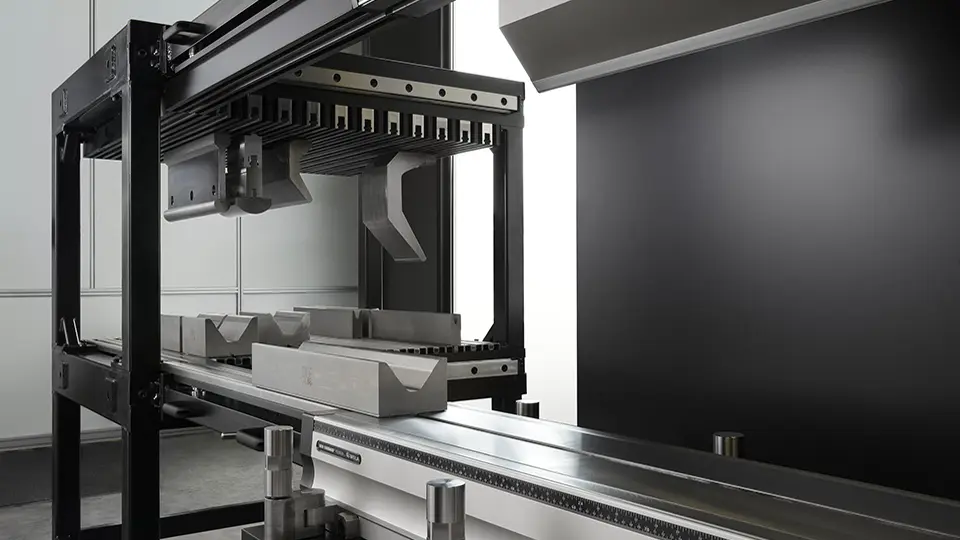
Problem-Solving in the Bending Process
In the precise art of bending stainless steel sheets, encountering and solving problems is a part of the process. Two common issues are cracks and breaks in the material, and errors in the bending process. Let’s explore effective strategies to deal with these challenges.
A. Dealing with Cracks and Breaks
Cracks and breaks in stainless steel during bending are often due to excessive stress or incorrect handling. To prevent this, it’s important to:
- Choose the right grade of stainless steel, as some are more ductile and better suited for bending.
- Ensure the material is at the correct thickness and has been properly annealed to reduce internal stresses.
- Use the appropriate bend radius. A radius too tight for the material’s thickness can lead to cracking.
- Adjust the press brake settings to apply force gradually and evenly.
B. Correcting Bending Errors
Bending errors can occur due to improper machine setup, incorrect tooling, or inaccurate measurements. To correct these errors, consider the following steps:
- Double-check the machine settings and specifications for the particular stainless steel grade and thickness.
- Verify that the tooling used is suitable for the type and thickness of the material.
- Ensure accurate placement of the sheet on the press brake. Misalignment can lead to uneven bends.
- Regularly calibrate the press brake to maintain precision in the bending process.
- If possible, use CNC press brakes for more complex bends, as they offer greater precision and control.
Addressing these issues requires a blend of technical understanding, attention to detail, and a thorough approach to preparation and machine maintenance. By implementing these strategies, fabricators can significantly reduce the occurrence of cracks, breaks, and bending errors, leading to more successful outcomes in their stainless steel fabrication projects.
Conclusion
In conclusion, mastering the bending of stainless steel sheets with a press brake requires a blend of technical knowledge, precise equipment, and problem-solving skills. Whether you’re dealing with complex bending operations or striving for high-quality finishes, the right approach and tools are essential. For those seeking top-notch press brake solutions, look no further than Krrass, China’s leading press brake manufacturer. Discover a range of innovative press brake machines tailored to your needs at Krrass Press Brake. Elevate your metal fabrication projects with Krrass’s precision engineering and advanced technology, designed to deliver excellence in every bend.
Read More:

